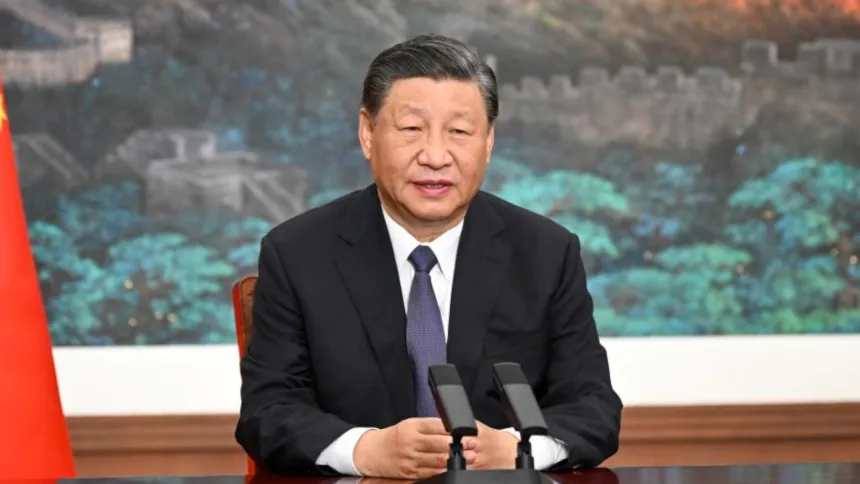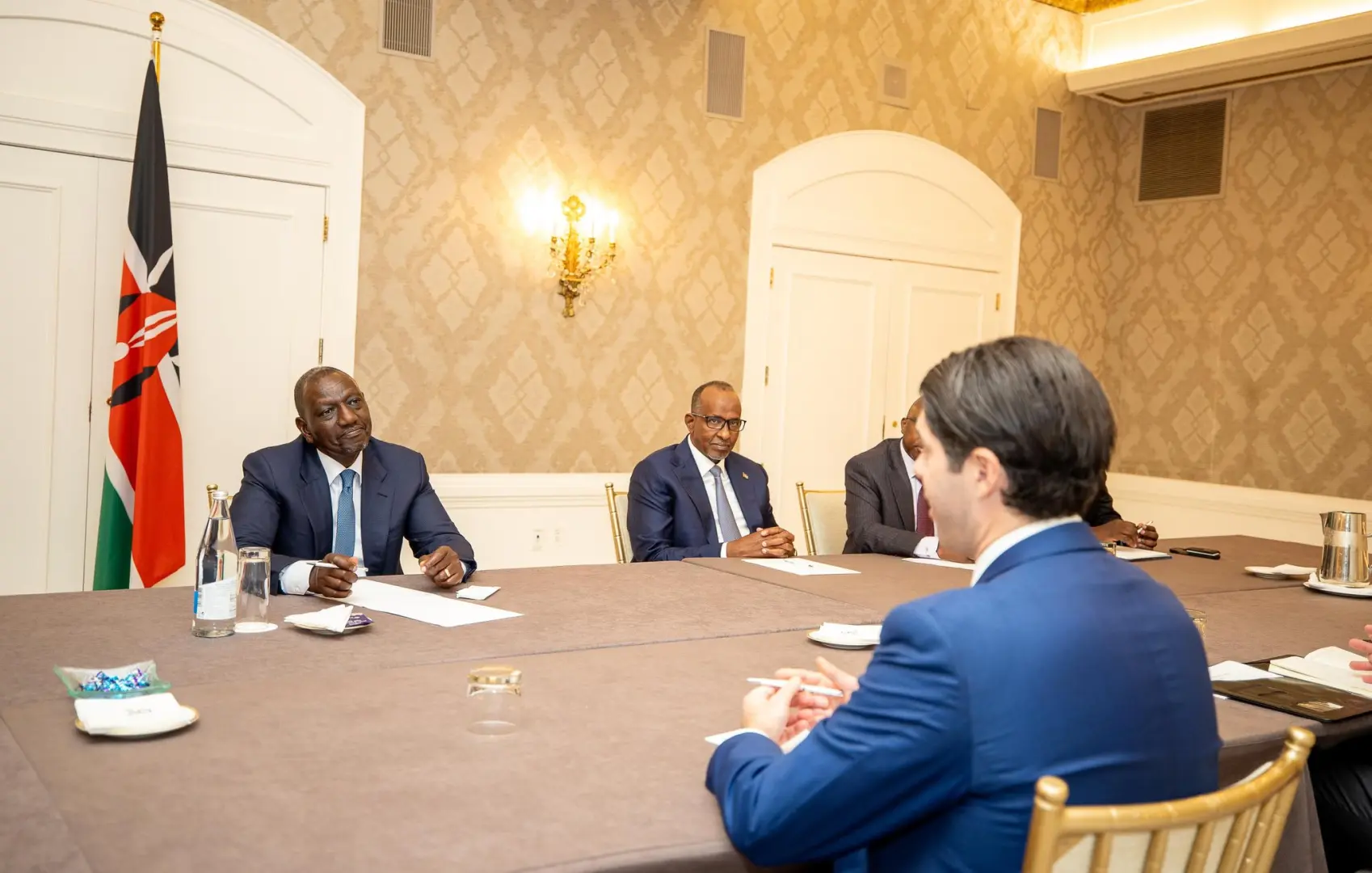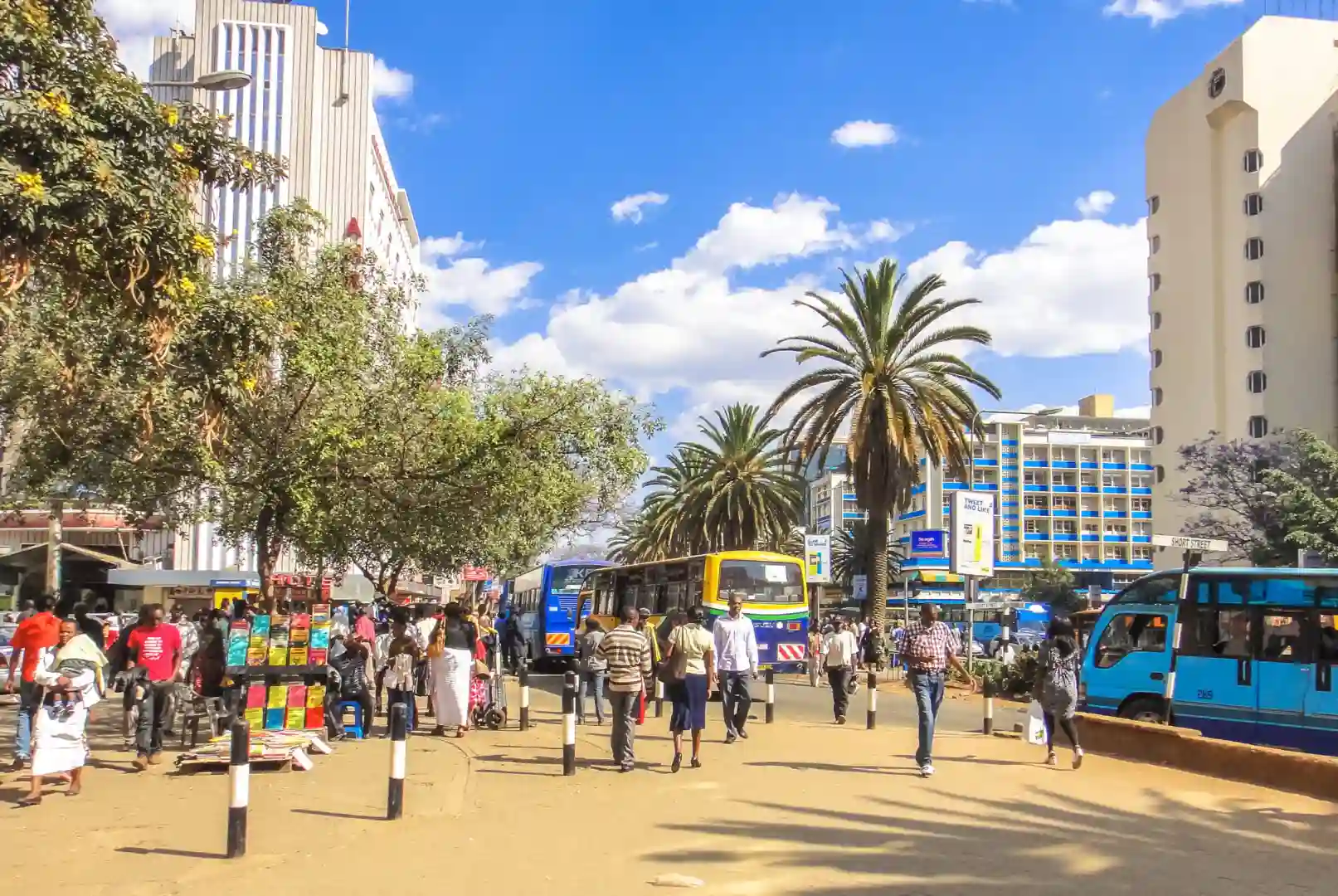In a powerful declaration of global solidarity and economic partnership, China has announced the full implementation of zero-tariff treatment on 100 percent of tariff lines for products from 53 African countries, including Kenya. This monumental move, taking effect last December, was unveiled by Chinese Foreign Affairs Minister Wang Yi on Wednesday, June 11, 2025, during the Ministerial Meeting of Coordinators on the Implementation of the Follow-up Actions of the Forum on China-Africa Cooperation (FOCAC) in Changsha. Chinese President Xi Jinping himself underscored the policy’s significance, stating it provides “new impetus” for shared development in a world increasingly defined by “changes and turbulence.”
This initiative is not merely a gesture of goodwill; it’s a strategic economic decision made against a backdrop of escalating protectionism in other parts of the world, particularly the imposition of tariffs by the United States. While the Fourth China-Africa Economic and Trade Expo runs concurrently in Changsha, drawing a multitude of African officials and businesses, the message from Beijing is clear: openness and cooperation, not economic bullying, are the pathways to shared prosperity.
The Genesis of a Grand Vision: FOCAC and China-Africa Solidarity
The relationship between China and Africa has deepened dramatically since the turn of the millennium, largely through the structured dialogue provided by the Forum on China-Africa Cooperation (FOCAC). Established in 2000, FOCAC serves as a triennial platform for high-level political coordination, policy dialogue, and pragmatic cooperation between China and African nations. It was born from a mutual recognition by both sides that the existing international order was often unjust and that developing countries needed a stronger, more unified voice in the global arena.
Over its two-decade existence, FOCAC has evolved significantly, fostering what China describes as a “win-win” engagement based on equal consultation, enhanced consensus, and strengthened friendship. The forum has provided a consistent framework for China to tailor its support to Africa’s developmental goals, rather than imposing a unilateral agenda. Key insights from FOCAC’s history include:
- Triennial Summits and Ministerial Conferences: These high-level gatherings, alternately hosted by China and African countries, serve as critical platforms for strategic discussions and the formulation of comprehensive cooperation frameworks.
- Significant Financial Commitments: FOCAC has consistently facilitated substantial financial support and loan commitments from China to Africa. For instance, successive FOCAC summits have seen loan commitments rise from $5 billion in 2006 (FOCAC III) to $60 billion in 2018 (FOCAC VII), primarily directed towards infrastructure development, industrial capacity cooperation, and agricultural modernization.
- Pragmatic Cooperation: Initiatives like the China-Africa Development Fund, the China-Africa Industrial Capacity Cooperation Fund, and the expansive Belt and Road Initiative (BRI) have facilitated tangible projects across the continent, focusing on infrastructure, industrialization, and sustainable growth.
At the heart of this enduring partnership is President Xi Jinping’s vision of fostering an “all-weather China-Africa community with a shared future for the new era.” This concept, deeply rooted in Chinese diplomatic philosophy, emphasizes mutual respect, equality, and a shared destiny. It moves beyond traditional donor-recipient relationships, advocating for comprehensive cooperation that builds resilience against global uncertainties. For African nations, this vision resonates deeply, offering a partnership model that champions their agency and collective aspirations in a multipolar world. It’s about building together, learning from each other, and standing in solidarity.
Zero Tariffs: A Concrete Step Towards Shared Prosperity
The recent announcement to fully implement zero-tariff treatment on 100 percent of tariff lines for products from 53 African countries is a tangible manifestation of this commitment. This means that virtually all goods produced and exported from these African nations to China will no longer be subject to import duties.
What Does “100% Tariff Lines” Truly Mean?
Historically, China has offered duty-free treatment to African Least Developed Countries (LDCs) since its accession to the WTO, often in response to calls from African governments to reduce China’s burgeoning trade surplus with the continent. However, previous policies often saw benefits concentrated in a narrower range of low-value commodities. The expansion to “100 percent of tariff lines” signifies a far more comprehensive opening of the vast Chinese market. It allows for a wider array of African products, including those with higher value-added components, to enter China without the added cost of tariffs. This effectively lowers the price of African goods for Chinese consumers and businesses, making them significantly more competitive.
Immediate Economic Implications and Human Impact:
The immediate economic impact is already evident. Chinese commerce officials reported a notable 15.2 percent year-on-year increase in imports from African Least Developed Countries (LDCs) under this policy from December 2024 to March 2025, reaching an impressive $21.42 billion. This surge suggests a quick response from the market, as African exporters find their products more appealing to Chinese buyers.
For millions of Africans, this isn’t just about macroeconomic figures; it’s about real opportunities and improved livelihoods.
- Farmers and Agro-Processors: Imagine a small-scale avocado farmer in Kenya, or a coffee cooperative in Ethiopia. With zero tariffs, their produce can reach the vast Chinese consumer market more affordably, increasing demand and potentially leading to higher incomes. This incentivizes increased production and investment in processing, creating more jobs in rural areas. China has already increased imports of African agricultural products, including avocados, soybeans, pineapples, peppers, cashews, sesame seeds, and spices. This policy deepens that potential, offering a lifeline and growth pathway for countless agricultural communities.
- Manufacturers and Artisans: For aspiring manufacturers and artisans, the zero-tariff policy means cheaper access to the world’s second-largest consumer base. A textile producer in Ghana, a leather goods manufacturer in Ethiopia, or a craftsperson in Tanzania might now find it easier to export their finished products, rather than just raw materials. This encourages product diversification and the development of higher value-added goods, supporting local industrialization efforts and creating skilled employment.
- Small Businesses and Entrepreneurs: Reduced barriers to market entry in China can empower small businesses and entrepreneurs who previously found the complexities of international trade daunting. It opens up new avenues for growth, encouraging innovation and investment at the grassroots level.
This enhanced market access has the potential to boost export volumes significantly, generate higher revenues for businesses, and stimulate production, investment, and employment across various sectors.
A Stance Against Protectionism: The Global Chessboard
The timing and rhetoric surrounding China’s zero-tariff announcement are particularly poignant. The Changsha Declaration, issued after the Ministerial Meeting, starkly castigated protectionism, stating that “the frequent occurrence of unilateralism, protectionism and economic bullying has created severe difficulties for the economic and social development and the improvement of livelihood in African countries and other developing countries.”
This is a direct counterpoint to the trade policies enacted by the United States. Under President Donald Trump, the US has previously imposed sweeping tariffs on goods from various global partners, including China and, more recently, specific African nations. For example, in April 2025, Washington imposed steep tariffs on goods from Lesotho (50%), Madagascar (47%), Mauritius (40%), Botswana (38%), and South Africa (31%). These protectionist measures aim to protect domestic industries but often lead to unintended consequences, as explored by economists and various reports.
The Economic Costs of Protectionism:
- Increased Domestic Costs: Tariffs act as taxes on imported goods, but these costs are almost always passed on to domestic consumers and businesses through higher prices. This erodes purchasing power and contributes to inflation.
- Retaliation and Supply Chain Disruption: Protectionist actions often trigger retaliatory tariffs from other countries, harming export-focused industries and creating uncertainty that can disrupt global supply chains. Businesses face increased operational complexity and costs as they scramble to find alternative suppliers or markets.
- Reduced Competition and Innovation: Shielding domestic industries from foreign competition can inadvertently lead to complacency, reducing the pressure for firms to innovate, improve efficiency, or adopt new technologies. This hinders long-term economic prosperity and limits consumer choice.
- Inefficient Resource Allocation: Protectionism can divert capital, labor, and investment away from potentially more productive sectors towards artificially supported industries where a nation may lack a true competitive advantage, leading to overall economic inefficiency.
- Job Displacement: While tariffs might protect specific jobs in targeted sectors, economic analyses often show that these gains come at a very high cost to the broader economy. Job gains in protected sectors can be offset by job losses in industries facing retaliation or higher input costs.
By contrast, China, through its zero-tariff policy, advocates for an alternative model: one of openness and cooperation. Foreign Minister Wang Yi highlighted China’s commitment to deeper collaboration with African countries across green industry, e-commerce, and artificial intelligence, asserting that “openness and cooperation are the right way forward.” This approach champions international free trade and mutual benefit, promoting a “universally beneficial and inclusive economic globalization” and contributing to an “equal and orderly multipolar world.”
Beyond Tariffs: Africa’s Path to Capitalizing on the Opportunity
While the zero-tariff policy is a significant advantage, its full impact on Africa’s long-term economic transformation requires additional, concerted efforts from African nations themselves. As analysts rightly cautioned, the trade composition between China and Africa remains skewed, primarily towards African raw material exports and Chinese-manufactured imports.
The Diversification Challenge:
African countries have historically been major exporters of raw materials to China. Key products include crude oil, copper, cobalt, iron ore, gold, and timber. While demand for these commodities is high, reliance on them makes African economies vulnerable to global price fluctuations and limits job creation in value-added sectors. To truly benefit from China’s open market, African nations must diversify their export baskets to include more manufactured goods, processed agricultural products, and services.
Challenges to diversification are significant:
- Inadequate Infrastructure: Poor road networks, unreliable electricity, and limited logistics infrastructure increase the cost of doing business and hinder the development of manufacturing capabilities.
- Lack of Skilled Labor: A mismatch between available skills and the demands of modern manufacturing sectors remains a barrier. Investment in vocational training and education is crucial.
- Limited Manufacturing Capacity: Many African countries lack the industrial base and technological capabilities to produce goods at the scale and quality required for global markets.
Addressing Non-Tariff Barriers (NTBs):
Even with zero tariffs, African exporters frequently encounter non-tariff barriers (NTBs) when accessing international markets, including China. These can be more complex and costly to overcome than tariffs. NTBs include:
- Complex Customs Procedures: Bureaucratic and time-consuming customs processes, excessive documentation, and delays at border points can significantly slow down trade, leading to huge losses for traders, especially smaller ones.
- Technical Barriers to Trade (TBTs): These relate to technical regulations, standards, and conformity assessment procedures. Meeting China’s stringent quality, health, and safety standards can be challenging for African producers.
- Sanitary and Phytosanitary (SPS) Measures: Rules to protect human, animal, or plant life or health, which can be particularly complex for agricultural exports.
- Logistical Challenges: High transport costs, lack of cold storage for perishable goods, and inefficient logistics networks within Africa hinder export competitiveness.
Consequently, African nations like Kenya will need to:
- Boost Manufacturing Capacity: Invest in industrial parks, provide incentives for local manufacturing, and encourage foreign direct investment into value-added production. The ongoing Fourth China-Africa Economic and Trade Expo in Changsha is showcasing opportunities for such partnerships. South Africa, for example, is participating as the Guest Country of Honour, using the platform to showcase export-ready businesses in consumer sectors like beauty, textiles, beverages, and agro-processing, including brands like Portia M and Nutcracker.
- Address Non-Tariff Barriers: Engage in policy dialogue with China to simplify customs procedures, streamline inspection and quarantine processes, and ensure greater transparency. African governments must also invest in improving their own regulatory environments and developing national quality infrastructure (e.g., testing labs, certification bodies) to meet international standards.
- Integrate into Global Value Chains: Move beyond simply exporting raw materials. This means developing processing capabilities, fostering backward and forward linkages with larger industries, and actively seeking opportunities to integrate into complex global supply chains. For instance, instead of just exporting cocoa beans, African countries should aim to produce chocolate.
- Invest in Infrastructure and Skills: Continue investing in critical infrastructure such as roads, railways, ports, and energy to reduce logistics costs and enhance industrial competitiveness. Simultaneously, significant investment in education and vocational training is needed to develop a skilled workforce capable of operating in modern, industrialized sectors.
This zero-tariff initiative serves as a powerful incentive for African nations to undertake these necessary internal reforms, positioning themselves to extract maximum value from this unprecedented market access.
The Broader Geopolitical Implications: A Global South Vision
The Changsha Declaration also affirmed a joint commitment to “stabilise this uncertain world with the certainty of the China-Africa relationship, establish a benchmark for sincere friendship and equality in the Global South, and advocate an equal and orderly multipolar world.” This statement carries significant geopolitical weight.
The Rise of the Global South:
The term “Global South” refers to countries that are economically underdeveloped or developing, primarily located in the Southern Hemisphere. It’s a metaphorical rather than strictly geographical designation, representing nations that often share a history of colonialism, face similar development challenges, and seek greater equity and voice in global governance. The rise of emerging economies like China, India, and Brazil has significantly amplified the importance of the Global South in contemporary global politics.
China and Africa are explicitly positioning themselves as “important members of and staunch forces in the Global South.” Their united front, as articulated in the Changsha Declaration, aims to challenge the dominant Western-centric international order and advocate for a more equitable global system. This includes calling for:
- True Multilateralism: Upholding a UN-centered international system and a WTO-centered multilateral trading system, emphasizing extensive consultation and joint contribution for shared benefit.
- Increased Development Assistance: The Declaration explicitly called on the international community to “effectively increase” development assistance to African countries, stressing that it should “not unilaterally slash it.” This highlights concerns that some traditional donors might be reducing aid, leaving African nations in a more vulnerable position.
This joint stance fosters a sense of collective power and shared destiny among developing nations, creating an alternative narrative to the prevailing geopolitical tensions. It’s about building bridges, not walls, and ensuring that the voices and needs of the developing world are heard and respected on the global stage.
A Trajectory of Growth: China-Africa Trade Figures
The economic relationship between China and Africa has experienced exponential growth since the launch of FOCAC in 2000. This partnership has transformed global trade patterns and cemented China’s position as a dominant economic force on the continent.
- Dramatic Growth: The total value of trade between China and Africa has soared by over 20-fold since 2000, reaching 2.1 trillion yuan ($291 billion) in 2024. This represents an impressive average annual growth rate of 14.2 percent.
- Long-Standing Partnership: China has consistently remained Africa’s largest trading partner for an astonishing 16 consecutive years, underscoring the enduring and deepening nature of their economic ties.
- Continued Momentum: The robust growth continues into 2025, with China’s imports and exports with Africa reaching RMB 963 billion in the first five months of the year, marking a 12.4 percent year-on-year increase and hitting a record high for the same period in history.
- Success Stories: Beyond the aggregate figures, individual African countries are seeing tangible benefits. For instance, approximately 90 percent of South Africa’s annual pecan production is now exported to China, a relationship that has helped South Africa become the world’s third-largest pecan producer. This highlights how targeted market access can create significant economic opportunities and foster growth in specific sectors.
The sheer volume and sustained growth of this trade underscore the mutual benefits derived from the partnership. While the trade balance issues and the need for diversification remain critical discussion points, the overall trajectory points towards an increasingly intertwined economic future.
Conclusion: Beijing’s Bold Bet on a Shared Future
China’s decision to fully implement zero-tariff treatment for 53 African countries is a bold economic and geopolitical statement. In a world grappling with protectionism and uncertainty, Beijing is opening its doors wider, offering a clear alternative pathway for development and cooperation. This is not just about trade; it’s about a philosophical commitment to a “shared future” where the Global South plays an increasingly influential role in shaping a more equitable and multipolar world order.
For African nations, this policy presents an unprecedented opportunity to boost their economies, diversify their exports, and accelerate industrialization. However, capitalizing on this opportunity will require proactive strategies to enhance manufacturing capabilities, address non-tariff barriers, and integrate more deeply into global value chains. It demands a commitment to internal reforms that strengthen the business environment and equip local populations with the skills needed to seize these new possibilities.
Ultimately, the success of this initiative will be measured by its human impact: whether it truly translates into more jobs, higher incomes, and improved living standards for the millions of people across Africa. China is extending a hand of partnership, offering a direct route to its massive market. The ball is now in Africa’s court to seize this moment, transforming market access into tangible, sustainable, and inclusive growth for all its citizens. This is a journey of shared destiny, with a brighter, more interconnected future in sight.
Ready to take your career to the next level? Join our dynamic courses: ACCA, HESI A2, ATI TEAS 7 , HESI EXIT , NCLEX – RN and NCLEX – PN, Financial Literacy!🌟 Dive into a world of opportunities and empower yourself for success. Explore more at Serrari Ed and start your exciting journey today! ✨
photo source: Google
By: Montel Kamau
Serrari Financial Analyst
12th June, 2025
Article, Financial and News Disclaimer
The Value of a Financial Advisor
While this article offers valuable insights, it is essential to recognize that personal finance can be highly complex and unique to each individual. A financial advisor provides professional expertise and personalized guidance to help you make well-informed decisions tailored to your specific circumstances and goals.
Beyond offering knowledge, a financial advisor serves as a trusted partner to help you stay disciplined, avoid common pitfalls, and remain focused on your long-term objectives. Their perspective and experience can complement your own efforts, enhancing your financial well-being and ensuring a more confident approach to managing your finances.
Disclaimer: This article is for informational purposes only and does not constitute financial advice. Readers are encouraged to consult a licensed financial advisor to obtain guidance specific to their financial situation.
Article and News Disclaimer
The information provided on www.serrarigroup.com is for general informational purposes only. While we strive to keep the information up to date and accurate, we make no representations or warranties of any kind, express or implied, about the completeness, accuracy, reliability, suitability, or availability with respect to the website or the information, products, services, or related graphics contained on the website for any purpose. Any reliance you place on such information is therefore strictly at your own risk.
www.serrarigroup.com is not responsible for any errors or omissions, or for the results obtained from the use of this information. All information on the website is provided on an as-is basis, with no guarantee of completeness, accuracy, timeliness, or of the results obtained from the use of this information, and without warranty of any kind, express or implied, including but not limited to warranties of performance, merchantability, and fitness for a particular purpose.
In no event will www.serrarigroup.com be liable to you or anyone else for any decision made or action taken in reliance on the information provided on the website or for any consequential, special, or similar damages, even if advised of the possibility of such damages.
The articles, news, and information presented on www.serrarigroup.com reflect the opinions of the respective authors and contributors and do not necessarily represent the views of the website or its management. Any views or opinions expressed are solely those of the individual authors and do not represent the website's views or opinions as a whole.
The content on www.serrarigroup.com may include links to external websites, which are provided for convenience and informational purposes only. We have no control over the nature, content, and availability of those sites. The inclusion of any links does not necessarily imply a recommendation or endorsement of the views expressed within them.
Every effort is made to keep the website up and running smoothly. However, www.serrarigroup.com takes no responsibility for, and will not be liable for, the website being temporarily unavailable due to technical issues beyond our control.
Please note that laws, regulations, and information can change rapidly, and we advise you to conduct further research and seek professional advice when necessary.
By using www.serrarigroup.com, you agree to this disclaimer and its terms. If you do not agree with this disclaimer, please do not use the website.
www.serrarigroup.com, reserves the right to update, modify, or remove any part of this disclaimer without prior notice. It is your responsibility to review this disclaimer periodically for changes.
Serrari Group 2025












